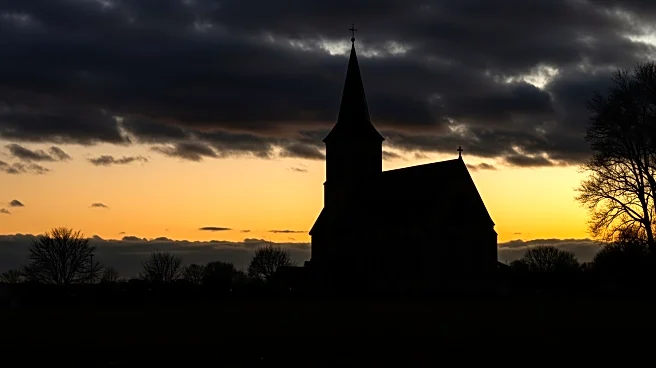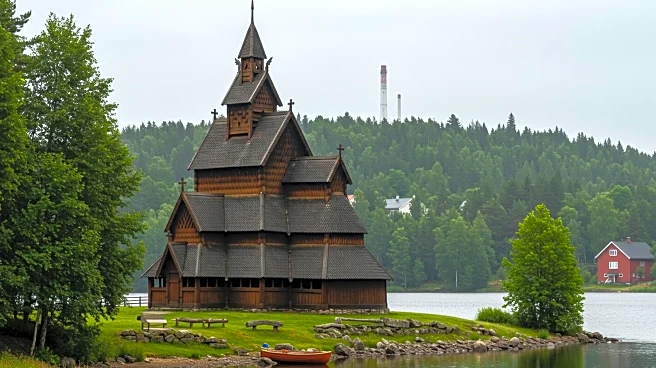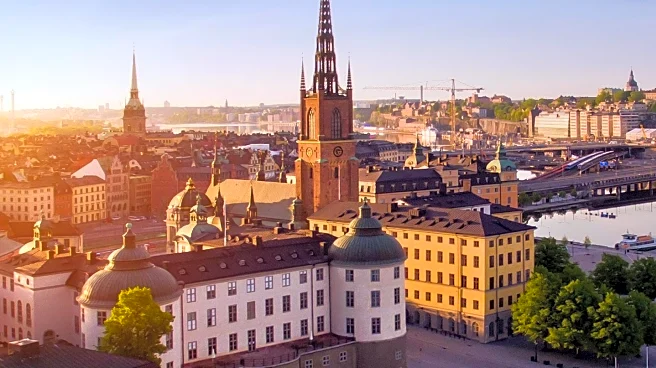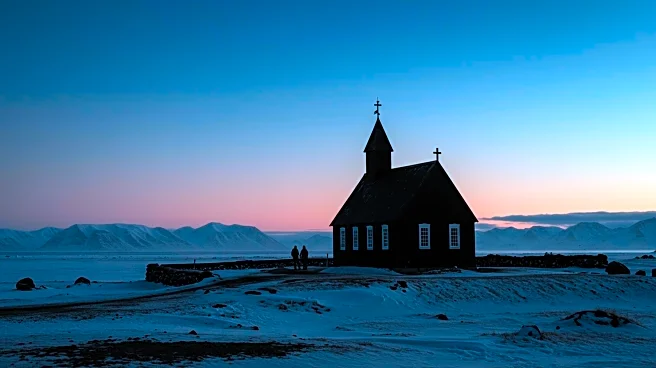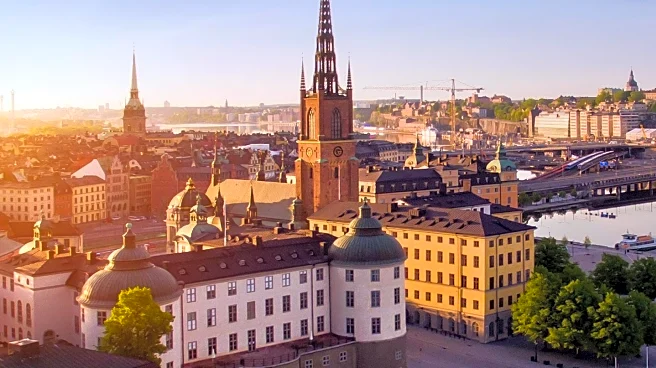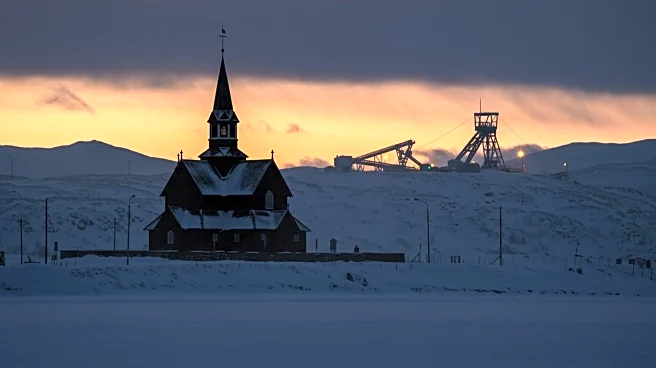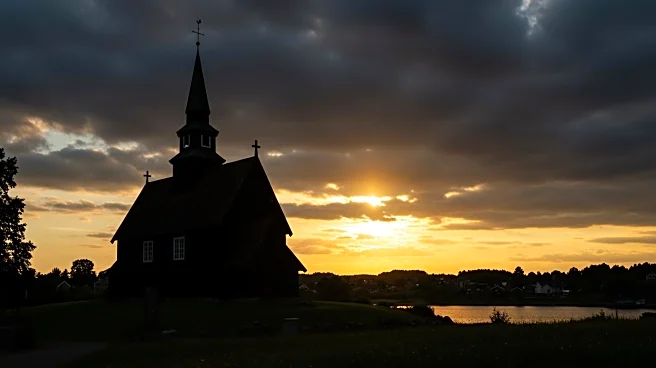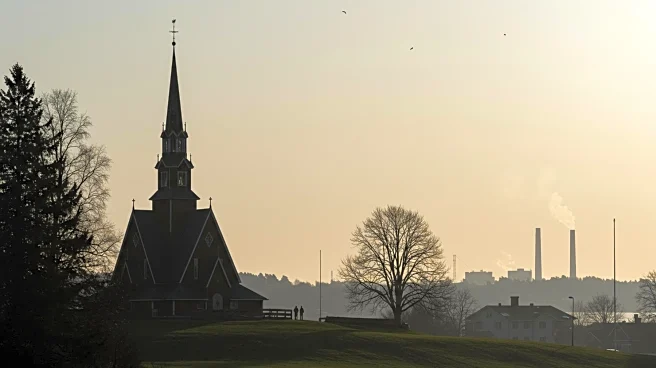What's Happening?
In northern Sweden, engineers have embarked on a significant project to relocate the historic Kiruna Church, a 113-year-old wooden structure, to a safer location nearly five kilometers away. This move is necessitated by extensive ground fractures resulting from over a century of iron ore mining, which have endangered the landmark. The church, built in 1912 and once voted Sweden’s most beautiful building, stands 35 meters tall, 40 meters wide, and weighs 672 tons. It has been placed on giant rotating platforms for a two-day journey to the new city center. The project, described by leader Stefan Holmblad Johansson as 'historic, enormous, and highly complex,' required years of planning, including clearing a 24-meter-wide path and removing infrastructure such as lighting poles and a bridge. The state-owned mining company LKAB is funding the billion-dollar relocation plan, which also involves moving other historic sites. Thousands of residents and King Carl Gustaf are expected to witness the event, which will be broadcast live on Swedish television.
Why It's Important?
The relocation of Kiruna Church highlights the significant impact of industrial activities on historical sites and communities. The project underscores the challenges faced by regions dependent on mining, where economic benefits must be balanced against environmental and cultural preservation. The billion-dollar investment by LKAB reflects the company's responsibility in addressing the consequences of its operations. This event also raises awareness about the need for sustainable practices in industries that can lead to land subsidence and other environmental issues. The relocation serves as a reminder of the delicate balance between economic development and the preservation of cultural heritage, which is crucial for maintaining community identity and history.
What's Next?
Following the relocation of Kiruna Church, attention will likely turn to the broader implications for the town of Kiruna and similar communities facing land subsidence risks. The success of this project may set a precedent for future relocations of historic sites threatened by industrial activities. Stakeholders, including local governments, mining companies, and cultural preservationists, may engage in discussions to develop strategies that mitigate the impact of mining on communities. Additionally, there may be increased advocacy for policies that ensure the protection of cultural heritage while supporting economic growth. The event could also inspire technological innovations in engineering and relocation techniques, benefiting similar projects worldwide.
Beyond the Headlines
The relocation of Kiruna Church brings to light ethical considerations regarding the responsibility of industries to protect cultural heritage. It raises questions about the extent to which companies should be held accountable for environmental and cultural impacts. The project also highlights the role of government and community engagement in decision-making processes that affect local heritage. Furthermore, it may prompt a reevaluation of how historical sites are valued and preserved in the face of economic pressures. This event could lead to a broader cultural shift towards prioritizing the preservation of historical landmarks as integral components of community identity and history.
